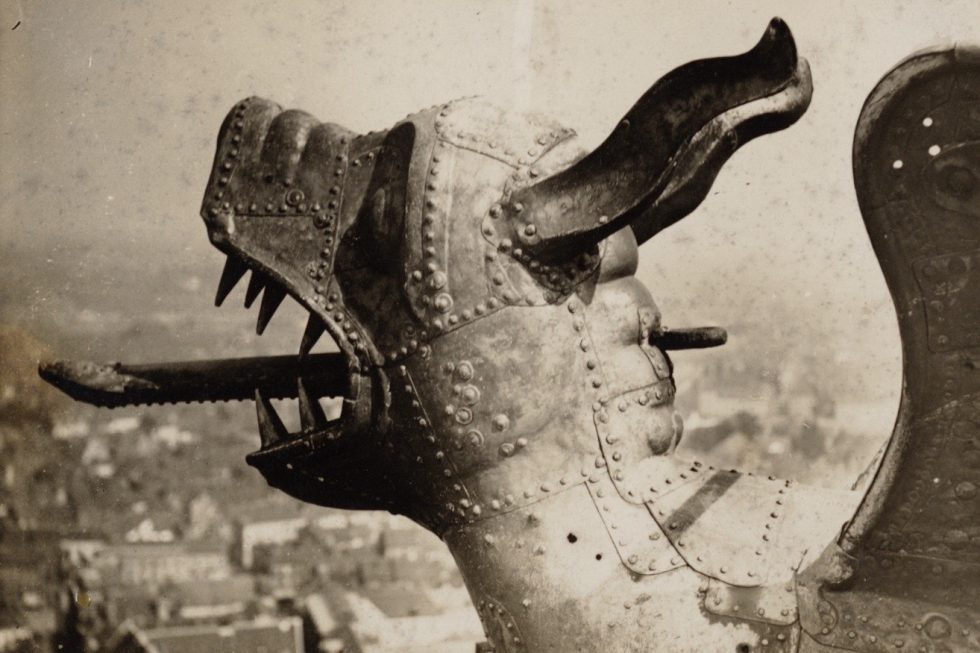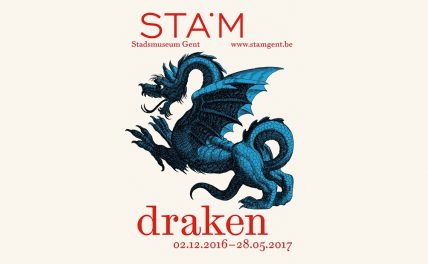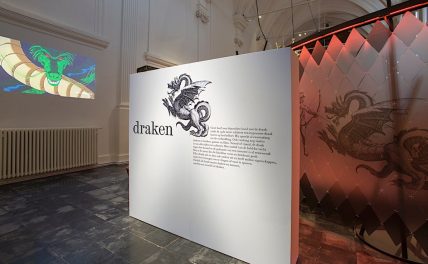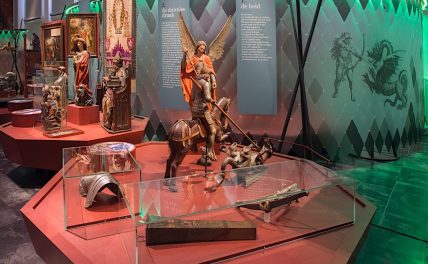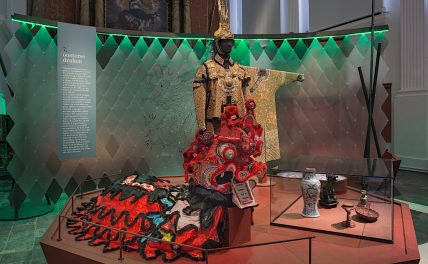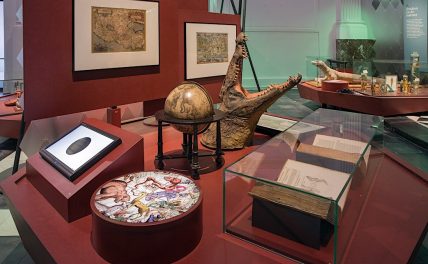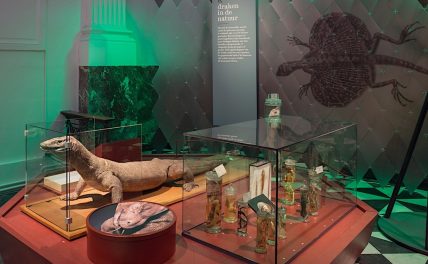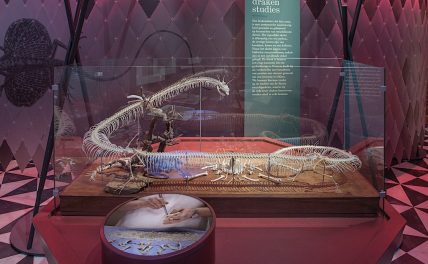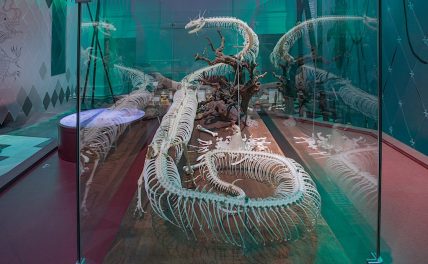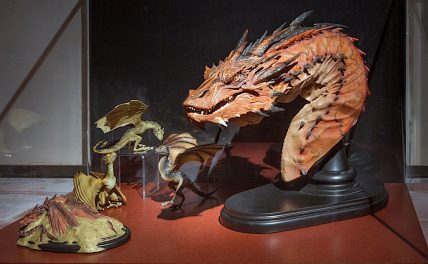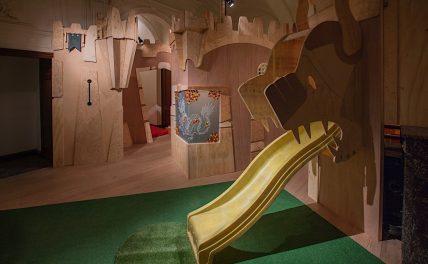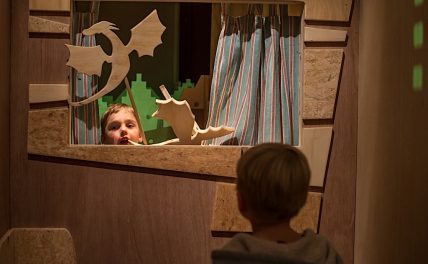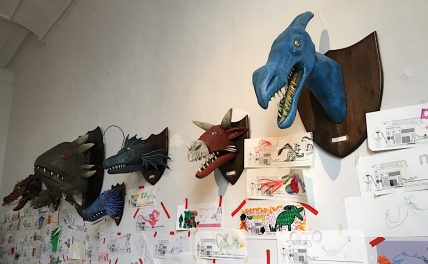The exhibition evokes the dragon as gates to the worlds of fantasy, myths and legends, rituals. It shows how the dragon travels with people from generation to generation and grips them. From evil dragons to good dragons, from treasure guards to city guards, from enemy to friend, heroes and saints, dragons from the west, east or unknown worlds, but also real dragons in nature; themes from an enormously wide range and international cultural heritage . For STAM the exhibition gives an oppertunity to unite Ghent and other cities with the symbol of the dragon: in Ghent watches an impressive dragon at the top of the Belfry over the city since the fortheenth century. For the exhibition, the curators search for and select material and intangible carriers of the themes: objects, paintings , games, films, stories, rituals, parades and logos.
In STAM, the exhibition focuses on the space of the former church, followed by a number of interactive rooms in the cloister: through a small door between the church and the adjacent room of the abbess, the visitor arrives at the castle with princess and dragons to be discovered by children ; there is a room for games with dragons to play , chronologically arranged with their original wearers from Atari and Play station for today's game consoles. In a studio visitors can create themselves dragons, by drawing and folding.
Photo’s exhibition Phile Deprez; photo’s castle, work space Kurt Stockman
BOOK
The book Dragons! Beasts of imagination , developed in parallel to the exhibition , is an important basis for the exhibition.
